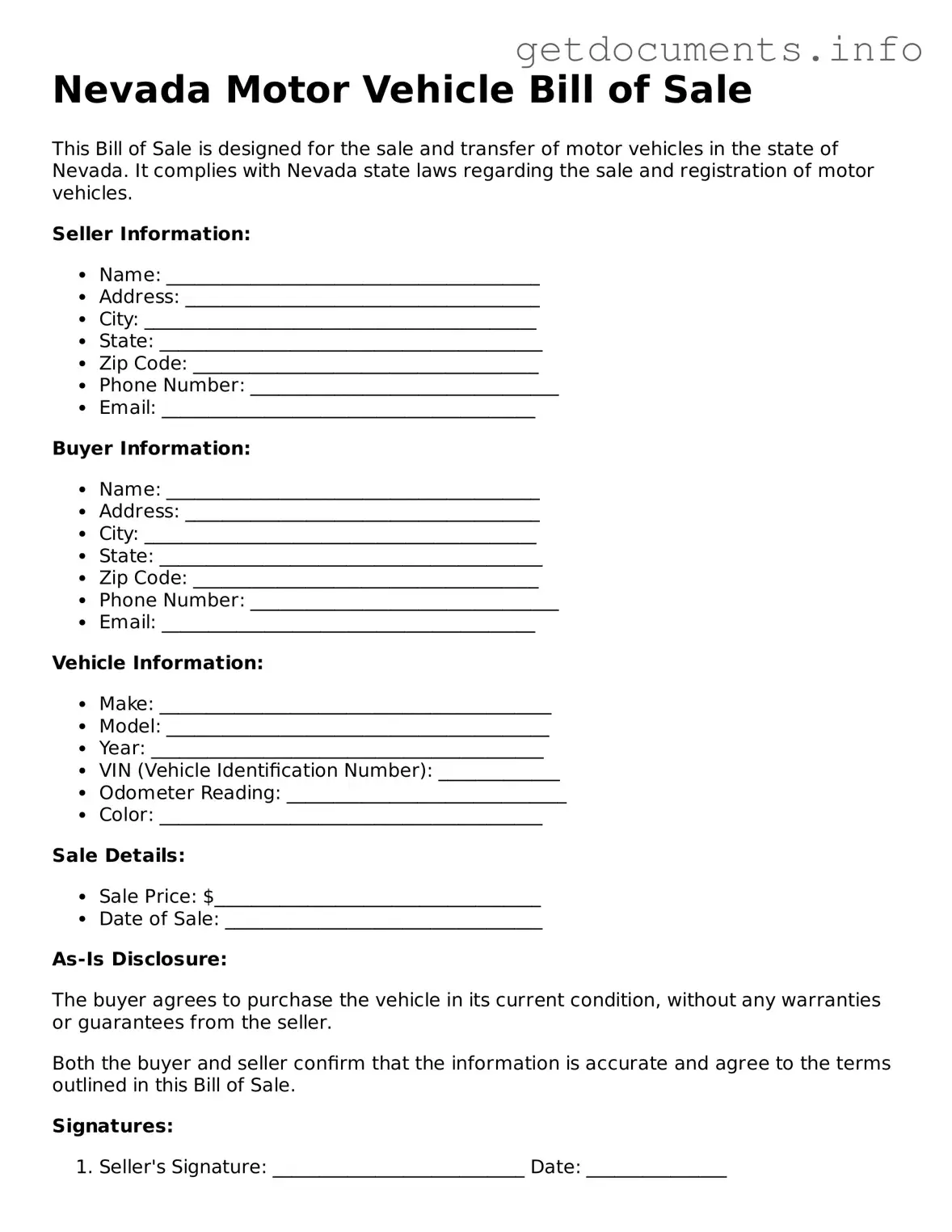Free Motor Vehicle Bill of Sale Template for Nevada
The Nevada Motor Vehicle Bill of Sale is a legal document that records the transfer of ownership for a vehicle in the state of Nevada. This form is essential for both the seller and buyer, as it provides proof of the transaction and details about the vehicle. To ensure a smooth transfer process, it's important to fill out this form accurately.
Ready to complete your vehicle sale? Click the button below to fill out the form!
Access Motor Vehicle Bill of Sale Editor
